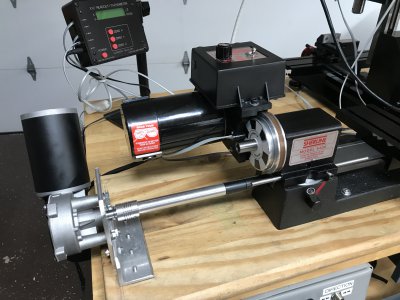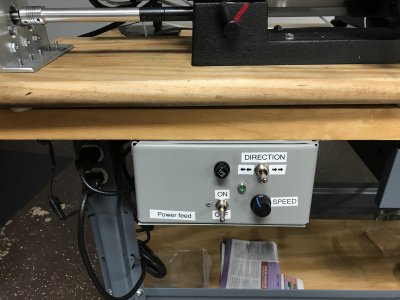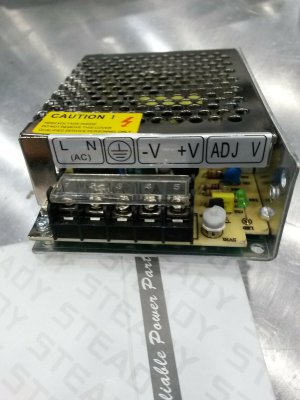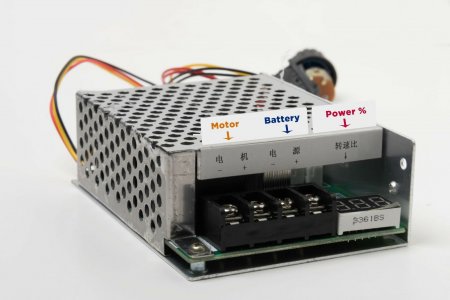- Joined
- Aug 5, 2015
- Messages
- 237
I built a new power feed setup from my Sherline lathe that works great. The finishes that I have obtained are incredible. On steel, brass, or aluminum I have achieved finishes that look a lot like "ground and polished", using HSS tool bits. The idea of using a gearmotor is credited to Mikey. I found that the super duper gearmotor that Mikey uses was out of my price range, so went looking for a cheaper solution.
The gearmotor is DC 24V with max speed of 50 rpm. (The same physical size gearmotor is available in other orientations, voltages and speeds.) I have to confess that I first bought a 160rpm version. That was a mistake. Then I bought the 50rpm that I am very pleased with.
To see more details about the gearmotor try searching "jcf63l dc24v 80w 50rpm speed reducing high torque electric gear box motor"
It easily dials down to speeds as low as 6 rpm (about 0.3 inches per minute feed). The Sherline standard power feed (no longer sold) is 20rpm / 1" per minute for comparison.
From the picture you can see I mounted the gearmotor some distance away from the headstock. The clearance allows the headstock to be turned for cutting tapers.
The gearmotor is controlled and powered with easily sourced parts. A 24v power supply and a PWM motor controller. I mounted them in a steel box.
The gearmotor is DC 24V with max speed of 50 rpm. (The same physical size gearmotor is available in other orientations, voltages and speeds.) I have to confess that I first bought a 160rpm version. That was a mistake. Then I bought the 50rpm that I am very pleased with.
To see more details about the gearmotor try searching "jcf63l dc24v 80w 50rpm speed reducing high torque electric gear box motor"
It easily dials down to speeds as low as 6 rpm (about 0.3 inches per minute feed). The Sherline standard power feed (no longer sold) is 20rpm / 1" per minute for comparison.
From the picture you can see I mounted the gearmotor some distance away from the headstock. The clearance allows the headstock to be turned for cutting tapers.
The gearmotor is controlled and powered with easily sourced parts. A 24v power supply and a PWM motor controller. I mounted them in a steel box.





